USS Florence Nightingale (AP-70) was a Maritime Commission type C3-M cargo ship built as Mormacsun for Moore-McCormack Lines. Mormacsun operated for Moore-McCormack from May 1941 until December 1941 when she came under the War Shipping Administration (WSA) for the duration of World War II. The ship operated with Moore-McCormack as the WSA agent, playing an important role in early supply of the Southwest Pacific, until transfer to the United States Navy September 1942 and commissioning as Florence Nightingale whereupon she became an Elizabeth C. Stanton-class transport ship. She was named for Florence Nightingale (1820–1910), the nursing pioneer, and is one of the few United States Navy ships named after a woman. The ship was returned to WSA in 1946 and then to Moore-McCormack operating as Mormacsun until sold to operate as Japan Transport and lastly as Texas.

USS Dorothea L. Dix (AP-67) was a transport ship of the United States Navy named for American activist Dorothea Dix (1802–1887).

USS General J. H. McRae (AP-149) was a General G. O. Squier-class transport ship built for the United States Maritime Commission during World War II. In 1946 she was transferred to the US Army and operated as USAT General J. H. McRae. On 1 March 1950 she was transferred to Military Sea Transportation Service and operated as USNS General J. H. McRae (T-AP-149). She was named for US Army Major General James H. McRae.

USS General G. O. Squier (AP-130) was the lead ship of her class of transport ship for the U.S. Navy in World War II. Decommissioned in 1946, she was sold privately in 1965 and renamed SS Pennmar, and was eventually scrapped.

USS General T. H. Bliss (AP-131) was a General G. O. Squier-class transport ship for the U.S. Navy in World War II. She was named in honor of U.S. Army general Tasker Howard Bliss. Decommissioned in 1946, she was sold privately in 1964 and renamed SS Seamar, and was scrapped in 1979.
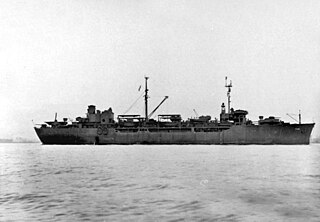
USS General J. R. Brooke (AP-132) was a General G. O. Squier-class transport ship for the U.S. Navy in World War II. She was named in honor of U.S. Army general John Rutter Brooke. Decommissioned in 1946, she was sold privately in 1964 and renamed SS Marymar, and was scrapped in 1979.
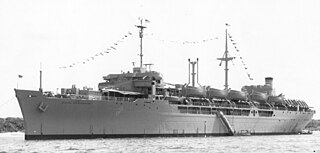
USS General R. M. Blatchford (AP-153) was a General G. O. Squier-class transport ship for the U.S. Navy in World War II. She was named in honor of U.S. Army general Richard M. Blatchford. She was transferred to the U.S. Army as USAT General R. M. Blatchford in 1946. On 1 March 1950 she was transferred to the Military Sea Transportation Service (MSTS) as USNS General R. M. Blatchford (T-AP-153). She was later sold for commercial operation under the names SS Stonewall Jackson and Alex Stephens, before being scrapped in 1980.

USS General Omar Bundy (AP-152) was a General G. O. Squier-class transport ship for the U.S. Navy in World War II.

USS General R. L. Howze (AP-134) was a General G. O. Squier-class transport ship for the U.S. Navy in World War II. The ship was crewed by the U.S. Coast Guard throughout the war. She was named in honor of U.S. Army general Robert Lee Howze. She was transferred to the U.S. Army as USAT General R. L. Howze in 1946. On 1 March 1950 she was transferred to the Military Sea Transportation Service (MSTS) as USNS General R. L. Howze (T-AP-134). She was later sold for commercial operation under the name SS Austral Glen, before being scrapped in 1980.

USS General W. M. Black (AP-135) was a General G. O. Squier-class transport ship for the U.S. Navy in World War II. The ship was crewed by the U.S. Coast Guard until decommissioning. She was named in honor of U.S. Army general William Murray Black. She was transferred to the U.S. Army as USAT General W. M. Black in 1946. On 1 March 1950 she was transferred to the Military Sea Transportation Service (MSTS) as USNS General W. M. Black (T-AP-135). She was later sold for commercial operation under the name SS Green Forest, before being scrapped in 1980.

USNS General H. H. Arnold (T-AGM-9) was a General G. O. Squier-class transport ship for the U.S. Navy in World War II. She was named in honor of U.S. Army general Robert Emmet Callan. She was transferred to the U.S. Army as USAT General R. E. Callan in 1946. On 28 April 1950 she was transferred to the Military Sea Transportation Service (MSTS) as USNS General R. E. Callan (T-AP-139). Placed in reserve in 1958, she was transferred to the U.S. Air Force in 1961 and renamed USAFS General H. H. Arnold in 1963, in honor of Henry H. Arnold, the first and only General of the Air Force. She was reacquired by the Navy in 1964 as USNS General H. H. Arnold (T-AGM-9). She was struck from the Naval Vessel Register on 1 March 1982.
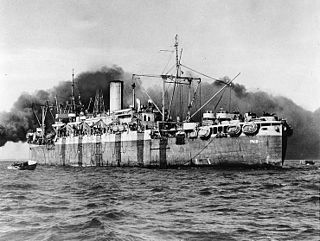
SS President Roosevelt was an ocean liner in service in the 1920s and 1930s. Originally built as a Harris-class attack transport towards the end of World War I, she entered commercial service after her completion. Having been built as Peninsula State, she was soon renamed President Pierce and then President Roosevelt. Requisitioned for service as a troopship with the US Navy during World War II, she was renamed USS Joseph T. Dickman (APA-13) and served in the Atlantic and Pacific theaters, being scrapped postwar in 1948.

USS General W. H. Gordon (AP-117) was a troop transport that served with the United States Navy in World War II. After the war, she was transferred to the US Army and served as USAT General W. H. Gordon. In the mid to late 1940s she sailed in trans-Pacific American President Lines passenger service with sister ship SS General Meigs. With the outbreak of the Korean War, she was reacquired by the Navy as a civilian-crewed Military Sea Transportation Service (MSTS) vessel, and redesignated USNS General W. H. Gordon (T-AP-117). She served again under the same designation in the Vietnam War.
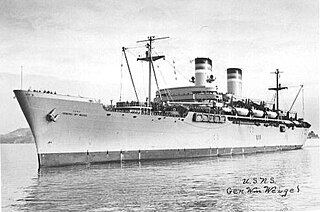
USS General William Weigel (AP-119) was a troopship that served with the United States Navy in World War II. After the war, she was acquired by the US Army and became USAT General William Weigel. On the outbreak of the Korean War, she was transferred to the Military Sea Transportation Service (MSTS) and designated USNS General William Weigel (T-AP-119), a designation she retained for her later service in the Vietnam War.
USS Thurston (AP-77) was a troop transport that served with the United States Navy during World War II. She was named after counties in Nebraska and Washington.
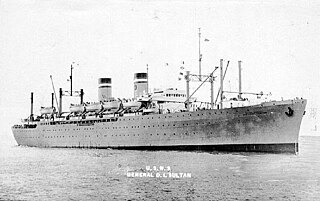
USS Admiral W. S. Benson (AP-120) began as an unnamed transport, AP-120, that was laid down on 10 December 1942 at Alameda, California by the Bethlehem-Alameda Shipbuilding Corp., under a Maritime Commission contract. She was named Admiral W. S. Benson (AP-120) on 20 October 1943 and launched on 22 November 1943; sponsored by Miss Dorothy Lucille Benson, granddaughter of the late Admiral William S. Benson. She was accepted from the Maritime Commission on 23 August 1944 and commissioned the same day.

USS Admiral E. W. Eberle (AP-123) was laid down on 15 February 1943 under a Maritime Commission contract by the Bethlehem Shipbuilding Corporation, Alameda, California; launched on 14 June 1944; sponsored by Mrs. Earl Warren, the wife of the Governor of California who later became Chief Justice of the United States Supreme Court; and acquired by the Navy and commissioned on 24 January 1945.

SS Santa Rosa was a passenger and cargo ocean liner built for the Grace Line for operation by its subsidiary Panama Mail Steamship Company of San Francisco. She was the first to be launched and operating of four sister ships, the others in order of launch being Santa Paula, Santa Lucia and Santa Elena. All four ships, dubbed "The Four Sisters" and "The Big Four" were noted as the finest serving the West Coast and were of advanced technology. All served in World War II as War Shipping Administration (WSA) troop ships. Both Santa Lucia and Santa Elena were lost in air and torpedo attacks off North Africa.

SS Sea Owl was a Type C3-S-A2 ship built during World War II by Ingalls Shipbuilding, Pascagoula, Mississippi. The ship was converted by Ingalls before delivery on 27 June 1944 into a troop transport for operation by the War Shipping Administration. The ship saw service in the European Theater of Operations with a final trip in January 1946 to Japan and return. The ship was released from troop service in February 1946 and placed in the James River Reserve Fleet 12 August 1946.
Athos II was a passenger and cargo liner for Compagnie des Messageries Maritimes making her maiden voyage from Marseilles 25 March 1927 starting on the line's Far East service serving Marseilles, Malaya, Indo-China, Hong Kong, Shanghai, Kobe and Yokohama. The ship, laid down in 1923 and launched 12 November 1925, had been completed by Aktien-Gesellschaft „Weser", Bremen and delivered to the French as part of World War I reparations. After a 1937 refit, including boilers increasing speed to 19 knots, Athos II resumed Far East service.


















